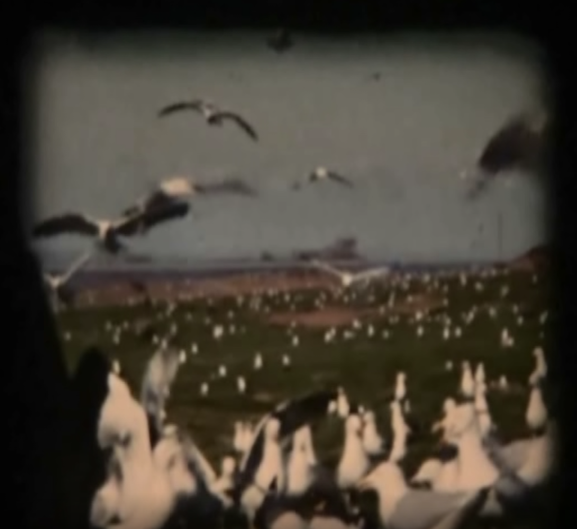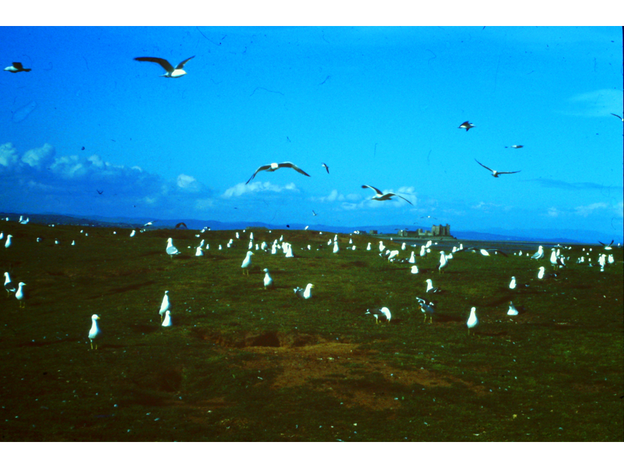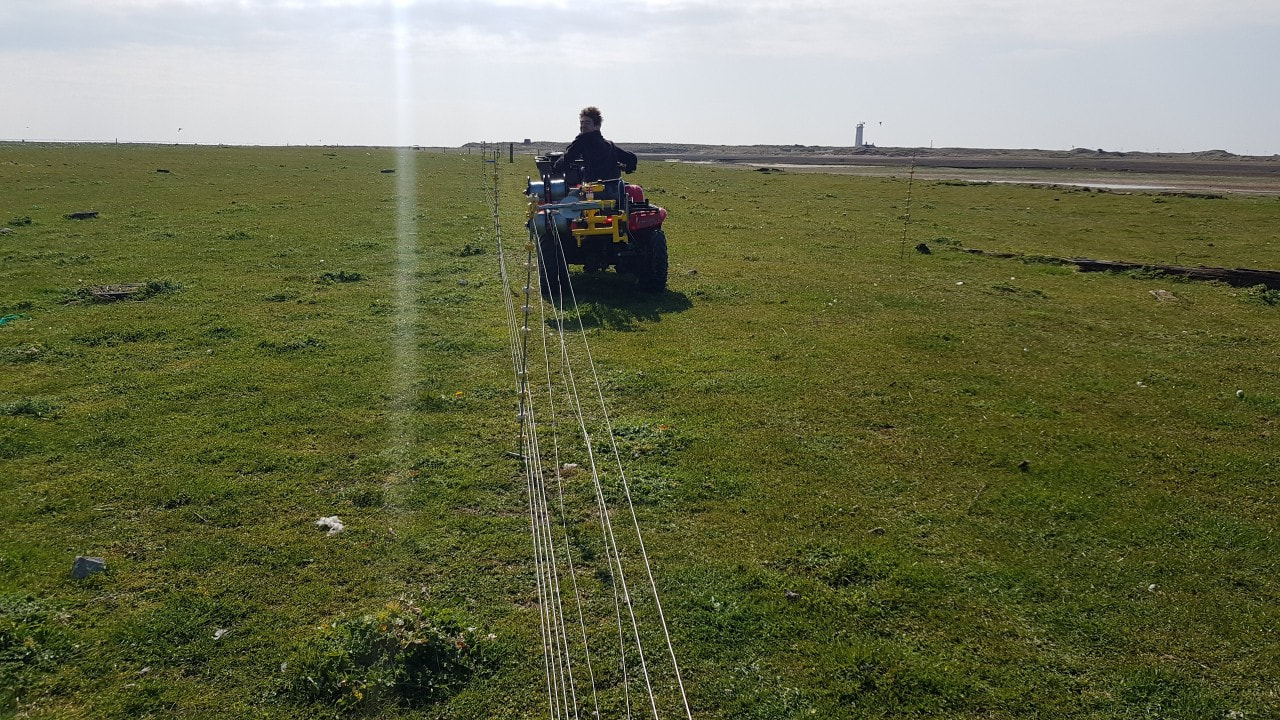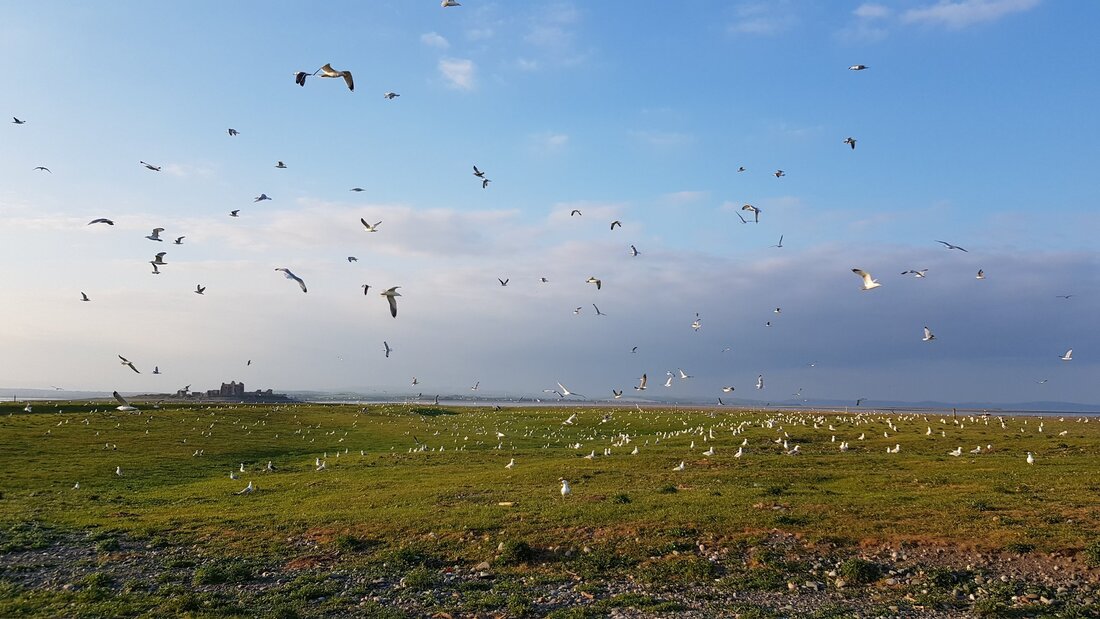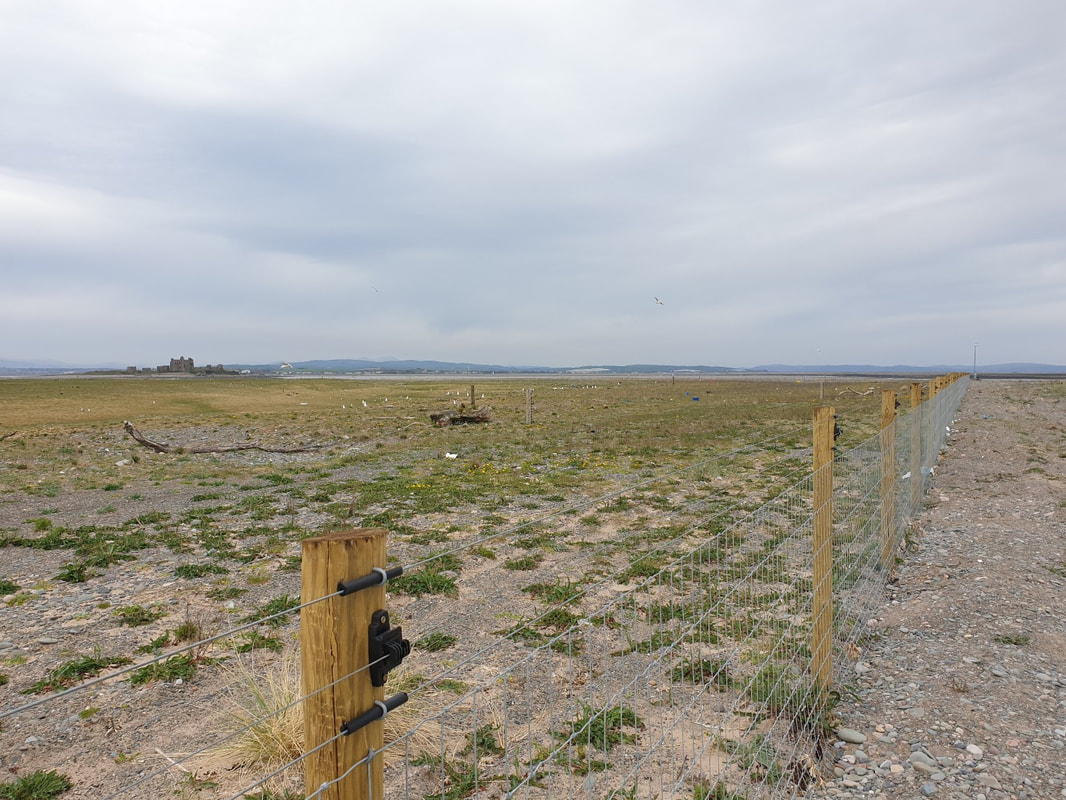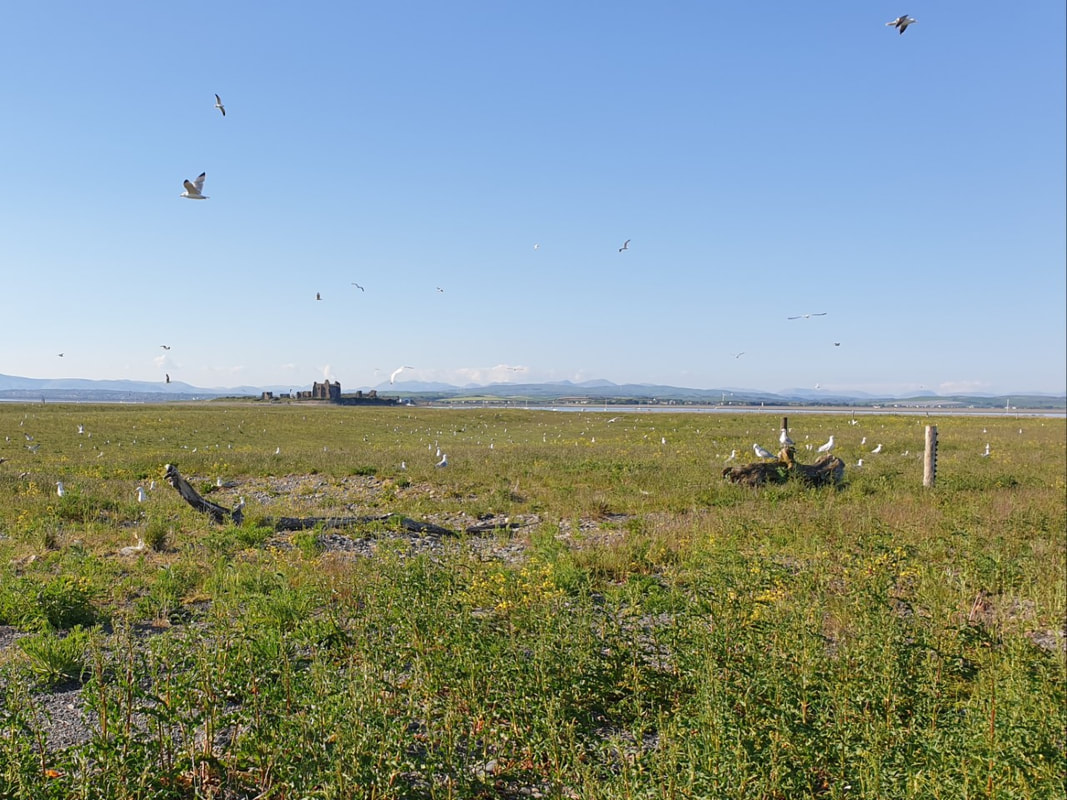|
Guest Blog by Sarah Dalrymple South Walney Manager & Reserves Officer, Cumbria Wildlife Trust The gull colony at South Walney is an incredible one, and its fortunes over the years mirror strongly that experienced by the UK’s two commonest gulls, the herring and lesser black-backed gulls. Although a few gulls nested in the early 1900s, the numbers were steadily increasing. With the South end of Walney Island established as a Nature Reserve in 1963, regular and reliable counts were undertaken, and by 1974 an incredible 41,366 pairs of gulls – 22,751 herring and 18,615 lesser black-backed – were counted, making this largest colony in Europe at this time. Speaking to older birders who remember the height of the colony, a daily job at this time was to walk the tide line at low tide and collect the corpses of hundreds of gulls that had died from botulism over the previous day. The main food source for the colony was presumed to be a landfill 2.5km up the road from the colony; as this reduced in scale over the years until complete closure in the 1980s, the colony size declined accordingly. Remaining stable at about 10,000 pairs for a few years, the colony then started to suffer from mammalian ground predators. Remarkably, as Walney is only separated from the mainland by a narrow channel, foxes were not present on the south end of the island until the 1990s, and badgers not established until the late 2000’s. In 2011 Cumbria Wildlife Trust trialled temporary electric fencing of a part of the colony, which saw a notable success in fledging compared to the rest of the colony. Two large areas of the remaining colony were fenced – The Spit, a shingle area at the very southern edge of the reserve, and Gull Meadow, an area of semi-fixed dune on the western shoreline of the reserve. Although initially successful, a new problem arose in the mid 2010s. Year on year, several thousand pairs were fledging zero chicks. The most harrowing was in 2017, as we found a busy colony full of gulls and their young was carpeted with dead chicks only a week and a half later. This scene was repeated the following year. Necropsies were carried out by the Animal & Plant Health Agency, and it was identified that most chicks had been killed not by predators, but with “peck” marks. It was highly likely that the gulls were, in fact, killing their own young, or the young of their neighbours, and then not eaten – just left where they were. This is not an unknown phenomenon, as we’d seen this at Rockcliffe Marsh gullery, another site managed by Cumbria Wildlife Trust, and it has been seen at Gulleries in Texel, the Netherlands – although not to the same extent. We think that this intra-species predation is caused by the gulls experiencing extreme stress, loss of a food source plus predation pressure plus disturbance all adding up to cause the gulls to kill either their own or their neighbour’s young. By removing predation and disturbance from the Rockcliffe Colony, we managed to stabilise it after several years of zero productivity, and it is now a recovering colony successfully fledging young each year. At South Walney, a landfill just over the bay had closed in 2016, GPS tracking from a BTO project suggested our gulls had been feeding there; this closure led to a huge food source loss. And our electric fence was only mostly keeping the predators out; badgers and foxes were still sometimes getting through, but in 2020 badgers not only happily pushed through the fence, they dug a temporary sett right in the middle of the colony! By this point South Walney had dropped to under 1,000 pairs. Clearly something drastic was required to save it, and at least by removing any risk of predation we’d give the gulls the best chance we could. So thanks to our funders, this winter we erected a permanent fence, nearly 2m high, topped with electric, and with a horizontal “skirt” extending out underground 50cm to prevent any digging underneath. We enclosed almost the entirety of the Spit with this fence, double the area of the original electric fence. The eggs have started to hatch, and our counts reveal a new record low of just under 500 pairs. Will the new fence be enough to save the gull colony?
0 Comments
Leave a Reply. |
Archives
April 2024
Categories
All
Photo credits: Oystercatcher by Katie Nethercoat (rspb-images.com)
LOTE Logo credits: Saskia Wischnewski |

